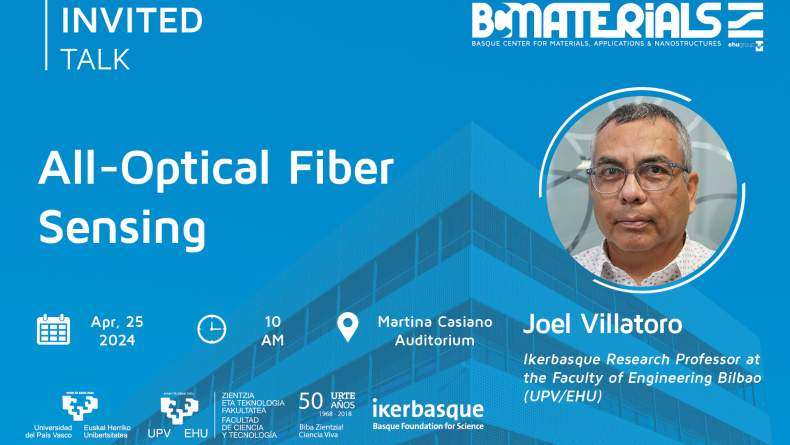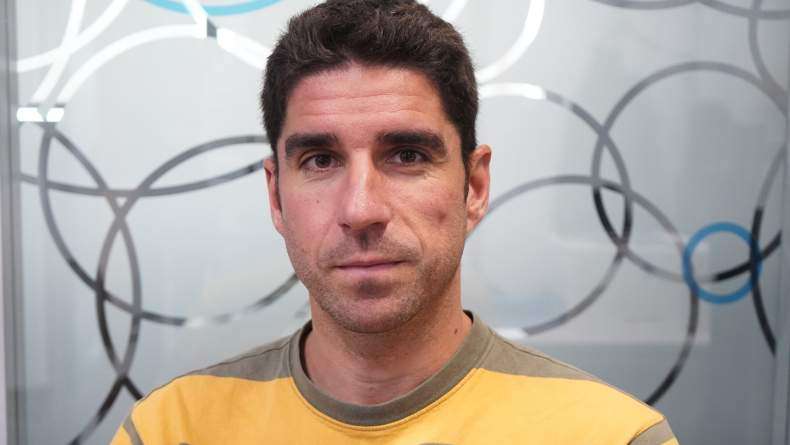BCMaterials Fortnightly Seminars #15

“Shape Memory Polymers: gamma irradiated polycyclooctene”
Nuria García-Huete(BCMaterials)
Gamma radiation process for modification of commercial polymers is a widely applied technique to promote new physical, chemical and mechanical properties. Gamma irradiation originates free radicals able to induce chain scission or recombination of radicals, which can induce, for example, crosslinking processes. The aim of this work is to research the structural, thermal and mechanical changes induced on a commercial polycyclooctene (PCO) when it is irradiated with a gamma source of 60Co at different doses (25-200 kGy). After gamma irradiation, gel content was determined by Soxhlet extraction in cyclohexane. Furthermore, thermal properties were evaluated before and after Soxhlet extraction by means of Thermogravimetric Analysis (TGA) and Differential Scanning Calorimetry (DSC), as well as mechanical properties were measured by Dynamic Mechanical Thermal Analysis (DMTA). The results showed the variations of the properties depending on the irradiation dose. Finally, a first approach to evaluate qualitatively the shape memory behaviour of all irradiated PCO samples was performed by visually monitoring shape recovery process. “Shedding light on the origin of multiferroicity in Mn1-xCoxWO4” Irene Urcelay-Olabarria(BCMaterials)
The use of the superspace symmetry analysis allows to rationalize the physical properties induced by incommensurate magnetic structure (ICMS) [1]. The ICMS of the type II Mn1-xCoxWO4 multiferroics have been studied in the light of this formalism. MnWO4 is a multiferroic material in which the magnetic order of one of its magnetic phases induces ferroelectricity. Like most multiferroic materials MnWO4 is extremely sensitive to small perturbations such as chemical substitution. It turned out that doping with Co2+ is particularly interesting since it strongly stabilizes the multiferroic phase at low temperatures, and moreover, by increasing the cobalt amount in the crystals (x>0.075) the orientation of the electric polarization flops from the b axis to the ac plane [2,3]. This change of orientation is linked to the symmetry change. The ICMS of x = 0 and x = 0.10 compounds, which exhibit completely different behavior, have been studied thoroughly using superspace formalism. We have found, not only the symmetry of the magnetic structures and their intrinsic restrictions, but also information about the tensor properties of each incommensurate phase, such as ferroelectricity or magnetostructural properties [4] of both compounds.Related news
Eloie Gallego, New Research Technician Assistant
BCMaterials welcomes Eloie Gallego, who joins our center as new Research Technician Assistant. She will work giving service to a growing laboratory activity in our facilities. Eloie’s academical and…Invited Talk with Joel Villatoro on April 25
On April 25, BCMaterials will receive Dr. Joel Villatoro as a new invited speaker with the talk entitled “"All-Optical Fiber Sensing". The talk will start at 10:00 at the Martina Casiano auditorium (…Invited Talk with Francisco Fernandes on April 22
BCMaterials will offer a new invited talk on April 22 with Francisco Fernandes, Associate Professor of the Condensed-Matter Chemistry Lab at the Sorbonne University (France) The talk will begin at…Jorge Saiz, New Ramón y Cajal Researcher at BCMaterials
We are happy to receive Jorge Saiz Galindo as new Ramón y Cajal Fellow, post-doctoral researcher in BCMaterials. Dr. Saiz obtained his degree in Biology and his PhD at the University of Alcalá, in…



